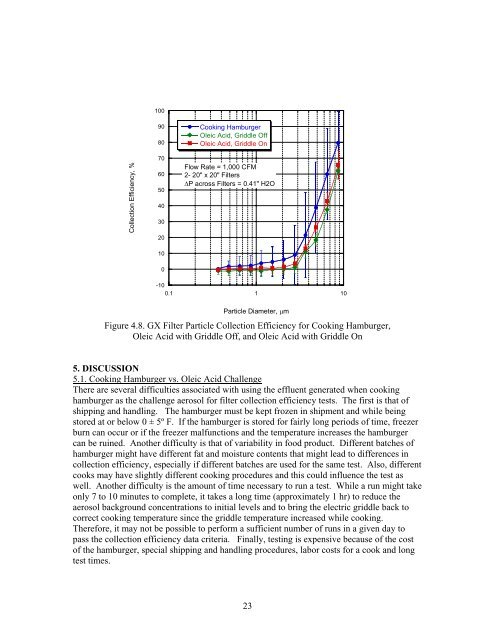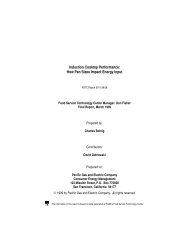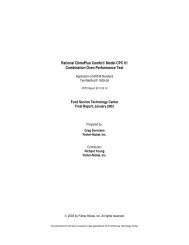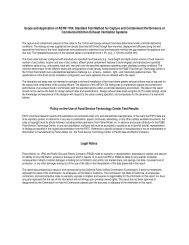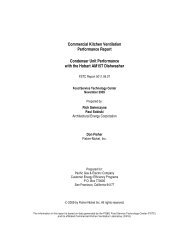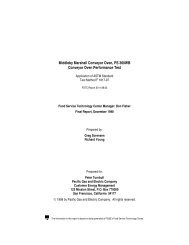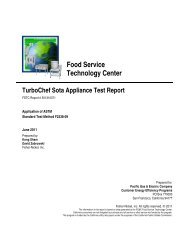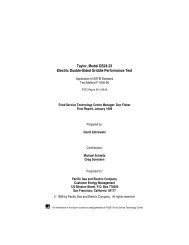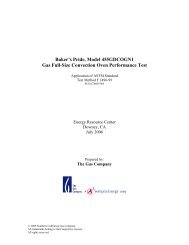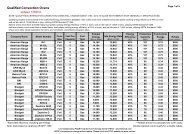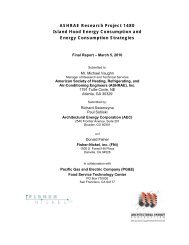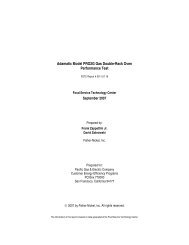Grease Filter Efficiency Test Method - Food Service Technology ...
Grease Filter Efficiency Test Method - Food Service Technology ...
Grease Filter Efficiency Test Method - Food Service Technology ...
You also want an ePaper? Increase the reach of your titles
YUMPU automatically turns print PDFs into web optimized ePapers that Google loves.
100<br />
Collection <strong>Efficiency</strong>, %<br />
90<br />
80<br />
70<br />
60<br />
50<br />
40<br />
30<br />
20<br />
Cooking Hamburger<br />
Oleic Acid, Griddle Off<br />
Oleic Acid, Griddle On<br />
Flow Rate = 1,000 CFM<br />
2- 20" x 20" <strong>Filter</strong>s<br />
∆P across <strong>Filter</strong>s = 0.41" H2O<br />
10<br />
0<br />
-10<br />
0.1 1 10<br />
Particle Diameter, µm<br />
Figure 4.8. GX <strong>Filter</strong> Particle Collection <strong>Efficiency</strong> for Cooking Hamburger,<br />
Oleic Acid with Griddle Off, and Oleic Acid with Griddle On<br />
5. DISCUSSION<br />
5.1. Cooking Hamburger vs. Oleic Acid Challenge<br />
There are several difficulties associated with using the effluent generated when cooking<br />
hamburger as the challenge aerosol for filter collection efficiency tests. The first is that of<br />
shipping and handling. The hamburger must be kept frozen in shipment and while being<br />
stored at or below 0 ± 5º F. If the hamburger is stored for fairly long periods of time, freezer<br />
burn can occur or if the freezer malfunctions and the temperature increases the hamburger<br />
can be ruined. Another difficulty is that of variability in food product. Different batches of<br />
hamburger might have different fat and moisture contents that might lead to differences in<br />
collection efficiency, especially if different batches are used for the same test. Also, different<br />
cooks may have slightly different cooking procedures and this could influence the test as<br />
well. Another difficulty is the amount of time necessary to run a test. While a run might take<br />
only 7 to 10 minutes to complete, it takes a long time (approximately 1 hr) to reduce the<br />
aerosol background concentrations to initial levels and to bring the electric griddle back to<br />
correct cooking temperature since the griddle temperature increased while cooking.<br />
Therefore, it may not be possible to perform a sufficient number of runs in a given day to<br />
pass the collection efficiency data criteria. Finally, testing is expensive because of the cost<br />
of the hamburger, special shipping and handling procedures, labor costs for a cook and long<br />
test times.<br />
23


